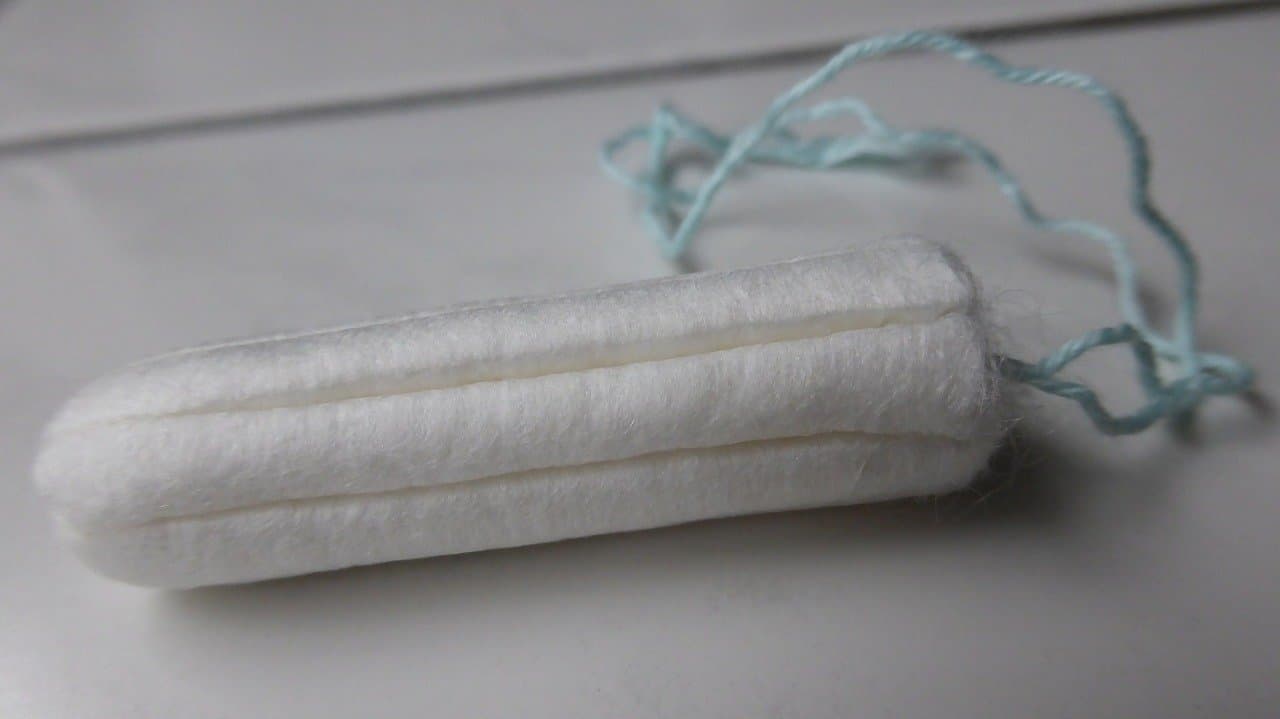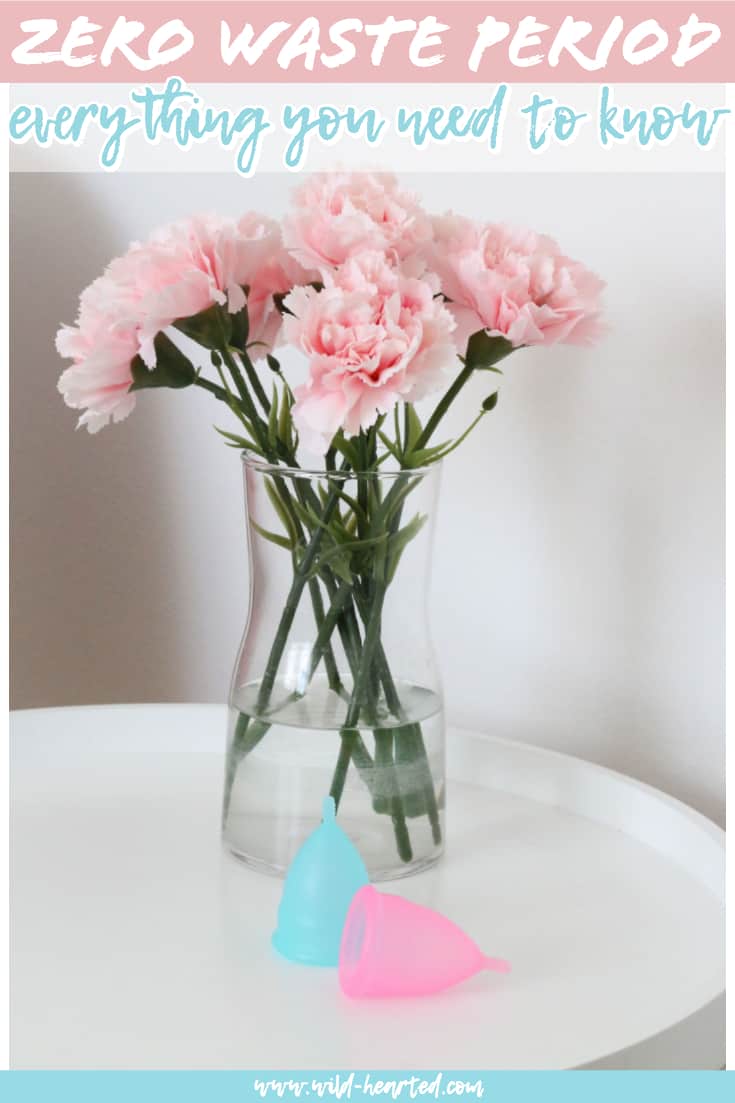I bet you’ve already heard about menstrual cups. They have certainly made a huge impact in recent years and I’m so happy that more and more people who have periods are learning about them and utilizing them. If you’re trying to lead a zero-waste lifestyle, are interested in saving money (because menstrual hygiene products are ridiculously priced), or want to try something to alleviate period cramps, then a zero waste period is perfect for you!
I first came across menstrual cups about the same time I started this blog because I was planning on traveling in Southeast Asia with a carry-on only. Not only was I interested in saving space in my bag, but I also knew that menstrual products weren’t incredibly common to come across so I didn’t want to be hunting down tampons and pads every single month. So, I purchased my first diva cup and then proceeded to be incredibly frightened of actually using it.
This brought back memories of 12-year-old me trying to figure out how the hell that tampon was supposed to go in there. But, have no fear! It’s not as scary as you’re making it out to be in your head. Once you get used to it (which won’t take long), this will be the best decision you’ve ever made.
Zero Waste Period
This post may contain affiliate links. Please see our disclosure.

How Wasteful are Menstrual Products?
Obviously, no one should feel ashamed of how they deal with their own period. This is in no way implying that. However, there are countless valuable reasons why moving to a zero waste period is a great idea.
Menstrual products are incredibly wasteful and a huge waste problem. This monthly habit that starts for most of us in our pre-teen or mid-teen age and can last until well into our 40s and 50s. I started when I was 12 years old and let’s say my period lasts until my late 50s – that’s 576 months of periods. That’s a lot of tampons and pads.
Want to know how much waste you’ll personally generate in a lifetime? Check out this menstrual waste calculator.
It is estimated that over 100 billion menstrual hygiene products are disposed of annually. And, remember, the plastic applicators are not recyclable as they’ve come in contact with human waste.

How Long Does it Take to Decompose?
Each pad and tampon will take roughly 500 to 800 years to decompose. If burned – which is common in developing nations – this releases toxic fumes.
And, of course, if they aren’t disposed of properly, they could end up releasing plastic and harmful chemicals into the ocean and ecosystem which is no good for marine life and those adorable baby turtles.
How Harmful are Menstrual Products?
Traditionally, menstrual products are extremely harmful. Manufacturers aren’t required to disclose ingredients because they are considered medical devices and yet we put these things either in our bodies or right up next to our bodies. Most tampons and pads contain potentially toxic – let alone nonbiodegradable – plastic and other synthetic materials. Additionally, most products contain bleached cotton, rayon, and/or wood pulp. Nonorganic cotton and rayon usually contain pesticides and herbicides of which some are considered likely carcinogens and have been linked to suppression, reproductive problems, and cancer.

Zero Waste Period – How Does that Work?
Obtaining a zero waste period is actually quite simple. All you have to do is a switch from what you currently use to a menstrual cup and while a Diva Cup is regularly mentioned, there are now several brands.
Like I said, I personally bought one about six years ago mainly for space and traveling reasons. I wasn’t even on my zero waste or vegan journey. It just so happens that all these things happily go together. For a few months, I still kept using tampons and pads because I couldn’t wrap my head around how this was possibly going to work.

Do Menstrual Cups Work if You Have a Heavy Period?
Yes! I’ve always had a very heavy – but thankfully short – period. I would go through so many super size tampons a day plus wearing a pad. Now, I wear a cup with no pad and only have to empty it twice a day.
Are Menstrual Cups Messy?
I would say that they are messier than tampons, but not necessarily messier than pads. In general, I know we have been accustomed to think that our periods are gross, but they are NATURAL. Now, I’m sure you don’t want blood all over you – neither do I – but it also isn’t the end of the world.
Now, I do think they are less messy when actually in use. I have no leakage, no stray blood, or anything like that. The only “messy” part is when you’re emptying it and cleaning it out. So, I suppose my answer is yes and no.

Are Menstrual Cups Painful or Uncomfortable?
I think, at first, it will feel different and maybe uncomfortable, but it shouldn’t feel painful. Once you get in your groove and find that right angle and everything, you shouldn’t even notice it there. I find it way less uncomfortable than a tampon or pad – or heaven forbid – both!
I’ve had a couple moments when it didn’t feel quite right, so I just took it out and reinserted it. It was just placed in a weird angle or spot. Sizing can be an issue if the cup is painful or continuously uncomfortable.
How Long Can you Wear a Menstrual Cup?
I have heavy flows and I only change mine twice a day. I usually change mine every 10-12 hours. It isn’t like tampons where you risk toxic shock syndrome if you don’t change it every 6-8 hours. Shouldn’t we have taken that as a sign that we shouldn’t have those in our body?!
What if I Need to Change my Menstrual Cup and I’m not in a Private Place?
If you’re not traveling and you’re at home, you can usually time this where it’s never a problem. Change it in the morning when you wake up and then when you get home or before bed. If you’re traveling and don’t have a private bathroom or you feel like you need to change it in a public place, I think it all just depends on your comfortability.
I’ve personally used water from my reusable water bottle that’s always with me anyway. If you don’t have one and you feel comfortable, just use the sink. Again, we shouldn’t be ashamed of our period anyway. Most public restrooms have locks on them so you can even lock it for the few quick seconds you need to clean it and then unlock it.
I’d say the easiest way to deal with it is having water on hand.
Should I wear period panties too?
I guess this couldn’t be taken two ways. Most of us have “period panties” that we wear during our period that we don’t care about getting stained. I still wear these on my period – well just because. But, I don’t have leakage. It’s just for habit reasons I suppose.
If we’re talking about actual period panties, then I think that’s completely up to you. I’ve never personally used them but I wouldn’t mind having a couple of pairs actually. Modibodi now has a vegan line and Thinx is vegan as well.
Can I wear a Menstrual Cup Swimming, Working Out, or Anything Else?
Yes! I’ve worn it swimming in the pool and ocean, I’ve done all sorts of physical activity and hiking, and more. I think this works even better than tampons and pads too. I also felt like tampons kept trying to come out on me.
Menstrual Cup and IUD – Can I Still Use One?
I do not personally have an IUD, but I know people who do and they still use a menstrual cup. There’s no scientific evidence that shows that a menstrual cup can interfere with a fitted IUD or dislocate it.
Benefits of a Zero Waste Period
There are so many benefits of moving to a menstrual cup and a zero waste period.
- Eliminating waste. You’re essentially eliminating ALL waste. A menstrual cup should last you 10 years if you take care of it.
- Saving money. You’re going to save SO MUCH MONEY.
- Saving time. No more constant bathroom breaks to check for leakage, changing tampons, and so on.
- Healthier. Toxic shock syndrome? Screw you! Chemicals being soaked up by your body? Nope!
- Cleaner. I honestly think overall there is LESS mess with the cup.
- Eliminating or reducing cramps.

My Personal Experience
I’ll be honest, I didn’t do a ton of research. When I switched to a menstrual cup, it was really only the Diva cup out there and that’s what I bought. It works well for me, but now there are so many more options. I’ve heard that the Diva cup is the most bought but also is only one-size meaning that it doesn’t work for everyone. If you’ve tried the Diva cup and it didn’t work for you – I highly suggest trying another brand that actually sells different sizes.
How Do I Clean It?
I want to preface this by saying I am not an overly clean person. I firmly believe that a little dirt is good for you. I hardly ever get sick and I think it’s because I don’t freak out about always being perfectly clean and I never use hand sanitizer. I’m not dirty by any means though. That being said, I pretty much just clean it with extremely hot water each time.
At the end of my period, I may soak it in hot water with a little vinegar but not every time.
My Debilitating Cramps Got Better
Ever since I first got my period, I’ve had debilitating cramps. For a while, we thought I may have endometriosis. I’m pleased that I don’t. If you’re interested in what that’s like, check out my friend’s blog and what it’s like living with endometriosis. My cramps were so bad that I would routinely miss a day of school, and later a day of work when my period first started. They’re so bad that I pass out – literally pass out – if I don’t take pain medicine early enough. And, all this to say that I have a really high pain tolerance.
But, guess what? I’m not kidding when I say my cramps got way better. They still hurt but I’m at least able to function now. I still take some pain medicine but usually only one round instead of all day every day during my period.
Different Menstrual Cups
There are several different brands and I highly suggest doing your own research before buying one. Here are a few brands that I know of, but there are even more.
PLANNING A TRIP?
Find accommodation, read accommodation reviews, and check flight prices.
Book attractions, tickets, or guides in advance.
Research using these guides or read my other zero waste or sustainability posts.
See my zero waste packing list.
↓↓↓ PIN FOR LATER ↓↓↓





- 9 Weird Things To Do In Dublin, Ireland - April 13, 2024
- 14 Weird Things To Do In Indianapolis, Indiana - April 13, 2024
- Bird Tourism: Getting Started - February 29, 2024






This is fantastic information!
Pingback: The lazy Traveler: 10 Easy Tips for Greener Travel.